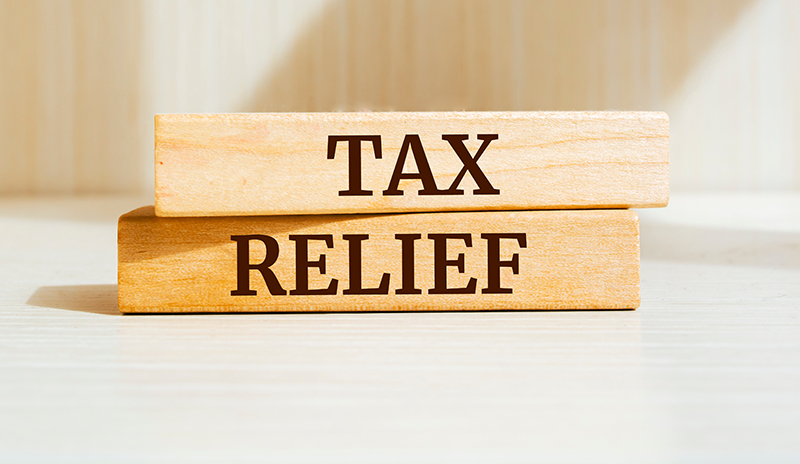How do I deduct my home office?
May, 10 2021 by Keith York, EA
If you operate a business from inside your home and maintain good records, the home office deduction can be one of the largest deductions you can take as a tax write-off. In a nutshell, the home office deduction is figured in one of two ways. You can either choose to write off a portion of deductible household expenses and all of directly-related expenses (see below) under the “actual” method, or you can simply claim $5 for every square foot of the designated office space under the aptly named “Simplified” Method. Whichever method you choose, however, there are two distinct requirements that must be established as fact to justify the deduction if you ever come under audit:
- Regular and exclusive use.
- Principal place of business.
Regular and Exclusive Use Test
 The first stipulation is that you “regularly” use part of your home in the active conduct of a trade or business. In other words, the assigned space must be used on a continuing basis. If you use your home office to perform your administrative tasks, such a scheduling appointments and basic bookkeeping, those tasks should always be done exclusively in the designated home office. This eliminates any confusion that may arise if you claim to sometimes do work from your kitchen table or living room, as those areas are commonly understood to be personal living spaces inside the home. The other caveat is the “exclusive” use requirement. This means the designated office space be used only for the purpose of operating your business. It can’t be used for any other purpose, such as a place where your kids to do their homework or as a guest bedroom – even if only for occasional houseguests. Strictly speaking, if the examiner deems the claimed office space is being used for any personal/nonbusiness reasons, they can deny the deduction. While most tax examiners apply common sense and exercise reasonable judgement, it all boils down to a clear explanation of your circumstances along with adequate supporting evidence.
The first stipulation is that you “regularly” use part of your home in the active conduct of a trade or business. In other words, the assigned space must be used on a continuing basis. If you use your home office to perform your administrative tasks, such a scheduling appointments and basic bookkeeping, those tasks should always be done exclusively in the designated home office. This eliminates any confusion that may arise if you claim to sometimes do work from your kitchen table or living room, as those areas are commonly understood to be personal living spaces inside the home. The other caveat is the “exclusive” use requirement. This means the designated office space be used only for the purpose of operating your business. It can’t be used for any other purpose, such as a place where your kids to do their homework or as a guest bedroom – even if only for occasional houseguests. Strictly speaking, if the examiner deems the claimed office space is being used for any personal/nonbusiness reasons, they can deny the deduction. While most tax examiners apply common sense and exercise reasonable judgement, it all boils down to a clear explanation of your circumstances along with adequate supporting evidence.
AUDIT TIP: It’s good practice to keep updated photographs of your home office, along with a basic log or some form of journal that can help document the regularity of the business use of your home office. Time-stamped photographs that demonstrate a clear business-like setting are persuasive, as would be a well-written personal narrative that outlines the scope of work conducted in the home versus outside the home. An ideal photograph would have the standard items in clear view: computer desk, laptop/printer, office chair, bookshelves, etc. Business cards and professional certifications/licenses should be prominently on display, and nothing to suggest probable personal usage.
Principal Place of Business Test
 Once you have satisfied the “regular and exclusive” use test, you must next show that your home office was indeed your “principal place of business.” Satisfying this requirement is beneficial for reasons that aren’t obvious to most, as even some tax examiners get this wrong. The IRS has long accepted the right of taxpayers to deduct business mileage when their home is the starting point for each trip. This is sometimes a hot button issue, as many examiners mistakenly believe any local travel in one’s car that is within one’s “metropolitan statistical area”, commonly regarded as “within city limits”, is disqualified on the basis of the trip being akin to an employee’s non-deductible work commute.
Once you have satisfied the “regular and exclusive” use test, you must next show that your home office was indeed your “principal place of business.” Satisfying this requirement is beneficial for reasons that aren’t obvious to most, as even some tax examiners get this wrong. The IRS has long accepted the right of taxpayers to deduct business mileage when their home is the starting point for each trip. This is sometimes a hot button issue, as many examiners mistakenly believe any local travel in one’s car that is within one’s “metropolitan statistical area”, commonly regarded as “within city limits”, is disqualified on the basis of the trip being akin to an employee’s non-deductible work commute.
Generally speaking, if you start and end your day in your home office because that is the only place where you can do your administrative and management functions, a good tax examiner will likely accept the deduction for your car and truck expenses, whether under the standard or actual method (to learn more about the topic of deductible business mileage, click here).
In the case of self-employed individuals such as contractors, beauticians, and gardeners, you will likely have many places where business is done. It may not be practical for you to reconcile billing statements from inside the cab of your truck, or to book appointments from a leased space in the beauty salon where you regularly meet your clients to cut their hair or trim their nails. As such, you need a home office to manage the non-client facing aspects of running a business.
AUDIT TIP: Be sure to document the usage of your in-home business in a journal that explains how it serves as your administrative headquarters. If you can establish that all of your accounting and other key managerial functions are performed there (e.g., bookkeeping, website maintenance, operations, budgeting, etc.), this can go a long way towards justifying your office-in-home as your principal place of business. A good business-use narrative is further corroborated with relevant supporting evidence, such as monthly bank statements for a business checking account that not only cover the entire audit period, but also list your home address as your business’ mailing address.
How to Deduct a Home Office under the Actual Expenses Method
Use Form 8829, Expenses for Business Use of Your Home, to divide the costs of operating your home between personal and business use. Common expenses such as rent, property taxes, home or renter’s insurance, and utilities are generally allocated. This means only a percentage of these “indirect” costs can be claimed. The deduction for indirect costs is determined according to your home office allocation percentage, as mentioned earlier. Other types of “direct” expenses, such as the cost of painting your office space to suit a business-appropriate meeting place for clients, or the cost of installing a dedicated high-speed DSL connection or second telephone line for business/fax, can be claimed in full.
Expenses Must be Deemed “Ordinary and Necessary”
 No matter which method you choose, the position tax examiners will always fall back on is whether the claimed home office expenses are deemed “ordinary and necessary.” This generally means the expenses are normal and recurring, or commonly expected in your line of work. In other words, if you are deducting the monthly rent for a boat slip at the marina for your painting business, there would need to be a good explanation as to how this expense relates to the production of income in your business. Bottom line, the examiner will apply the standard of a prudent-minded business person. In other words, the examiner would ask whether other business owners, in the interest of being profitable and avoiding wasteful spending, might choose to incur the same type and amount of expenses. Likewise, the examiner might ask whether an employer would justify the incurred expense and reimburse their employee without hesitation if an expense claim were submitted. See State Tax Note below for a brief comment on the subject of employees versus independent contractors and impact of COVID-19 on the home-office deduction.
No matter which method you choose, the position tax examiners will always fall back on is whether the claimed home office expenses are deemed “ordinary and necessary.” This generally means the expenses are normal and recurring, or commonly expected in your line of work. In other words, if you are deducting the monthly rent for a boat slip at the marina for your painting business, there would need to be a good explanation as to how this expense relates to the production of income in your business. Bottom line, the examiner will apply the standard of a prudent-minded business person. In other words, the examiner would ask whether other business owners, in the interest of being profitable and avoiding wasteful spending, might choose to incur the same type and amount of expenses. Likewise, the examiner might ask whether an employer would justify the incurred expense and reimburse their employee without hesitation if an expense claim were submitted. See State Tax Note below for a brief comment on the subject of employees versus independent contractors and impact of COVID-19 on the home-office deduction.
AUDIT TIP: Personal household expenses, such as food eaten in the home and your cable or Netflix/HBO subscription, are generally not deductible. While it may be arguable that you need a big screen television to monitor the Weather Channel to see when it is appropriate to plant seeds and/or water the fields of wheat in your home-based farming operation, examiners may regard such attempts as outright bogus. Sometimes it’s best to not defend these types of expenses in an audit, as not doing so often builds credibility. Speaking as a person with hundreds of hours of talk time with federal and state tax examiners, they are rarely persuaded by creative logic, particularly on matters they deem to be a frivolous tax position (i.e., the deduction of a rented boat slip per above). This is where the good folks at TaxAudit can help you navigate through the ebb and flow of your audit, allowing you to pick your audit battles wisely. In most cases, the best path to a good outcome in your tax audit is to remain on good terms with your tax examiner and get them to work with you, not against you.
STATE TAX NOTE: Office-in-Home Deduction for Employees
While the federal deduction for unreimbursed employee business expenses was eliminated for tax years 2018 to 2025, employees who are residents of the states of Alabama, Arkansas, California, Hawaii, Minnesota, New York, and Pennsylvania, can still claim the home office deduction, subject to a number of stipulations. This is generally good news given the shift to more cases of remote work in the COVID era. Itemizing on Schedule A for miscellaneous deductions on your state tax return can often save you hundreds, if not thousands, of dollars off your bottom line tax obligation.
If you wish to stay updated on new and emerging developments in this area, our website may prove to be a great resource for you. You may also wish to review a related blog, “How do I deduct my home office as an employee?” for a general overview of the legal requirements.
Where to Get More Information
There are a few unique situations with their own set of special tax rules that go beyond the scope of this blog, such as daycare providers or an outside sales representative that uses part of their home to store inventory or product samples. For a deeper dive into these areas, and to get a comprehensive overview of the IRS’ views on the home office deduction and related business expenses in general, download the most recent versions of IRS Publications 463 and IRS Publication 587. Be sure to download the correct version of the publication for the year at issue, as each year stands alone, and tax laws are frequently changed. You can download prior year editions of the IRS’ official forms and publications by searching the publication or form by number (if known), on the IRS site.
In conclusion, the home office deduction is a very popular deduction but one that is also widely misunderstood. Claiming the deduction is not a sure-fire trigger for getting audited. But if you ever do find yourself caught in the audit net, having good records and logs for things like business miles, business travel, and home office usage, is key to a good audit defense case. Tax examiners are tasked with verifying that your claimed expenses are both reasonable in amount and that the figures you claim can be mathematically verified. They rely heavily on your third-party backup documentation for validating your facts and for corroborating your explanatory narratives. The unfortunate reality is that tax laws are much more restrictive than they are permissive, and many tax examiners can be quite aggressive in their evaluation of your case, especially if they think you are taking liberties with your interpretation of the law.





